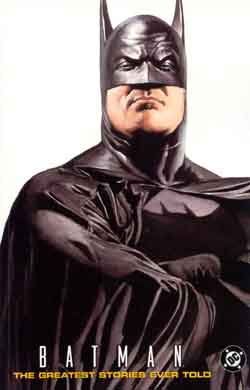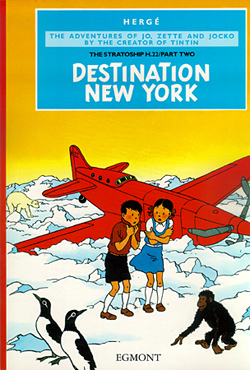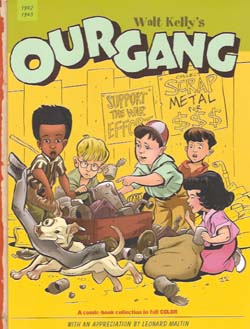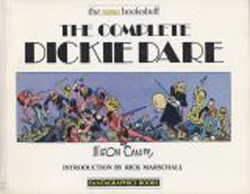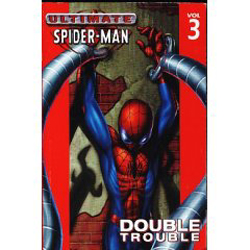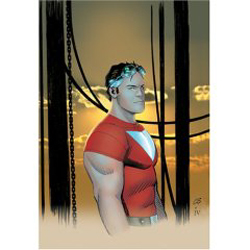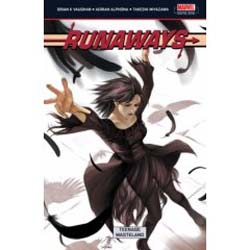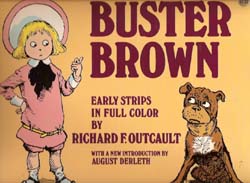UK EDITION
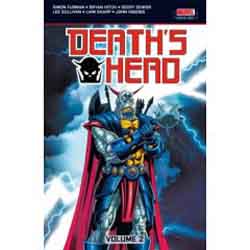
By Simon Furman & various (Panini Publishing UK)
ISBN 1-905239-69-6
This collection completes the gathering of material featuring the robotic Freelance Peacekeeping Agent (never, ever call him a bounty hunter!) who rampaged through the British corners of the Marvel Universe – and indeed the Americas, as this volume riotously reveals – before he was upgraded into a multiple-personalitied super-killer in the Death’s Head II miniseries.
‘Time Bomb’ (originally printed in Death’s Head #8) is written and inked by Steve Parkhouse and illustrated by Art Wetherell. Our far-future protagonist is hired to “Remove†the Doctor (that would be Doctor Who to the uninitiated) before he can thwart the plans of Josiah W. Dogbolter – who sees Time as a precious commodity, and therefore wants to corner the market in it.
Utilising the “Dogbolter Temporal Rocket†Death’s Head is dispatched through the Chronal Ether to eliminate the Time Lord (the Sylvester McCoy version, if you’re keeping count) only to discover that he’s been set up by the scurrilous plutocrat. He also finds that the Doctor has left him on top of the Fantastic Four’s headquarters…
Simon Furman and Geoff Senior return for the next tale. ‘Clobberin’ Time’ is a good old fashioned fist-fest as the Fantastic Four first fight, then befriend, the robotic Fixer. Unfortunately, their attempts to return him to his own era go awry and he lands in the corporate dystopia of 2020AD, geting into a big bust-up with the Iron Man of that time. Bryan Hitch illustrates Furman’s ‘The Cast Iron Contract’, which ended the 10 issue run of Death’s Head. But the Freelance Peacekeeper was too popular to stay in limbo for long…
Furman and Senior returned to the character in ‘The Body in Question’, a lavish original graphic novel that explored his origin as well as tying up some loose ends with the villain Big Shot who had been built up over a number of stories only to lose his chance when the comic book was cancelled.
From there Death’s Head became a guest-star in other comics – the traditional route to regaining a comic series of one’s own. Furman and Hitch, plus inker John Beatty created ‘Priceless’ in She-Hulk #24, and Walt Simonson included him in his extended time-travel saga during his run as writer/artist on Fantastic Four (‘Kangs for the Memories’ in FF #338). He also had a solo adventure, ‘The Deadliest Game,‘ in the fortnightly anthology Marvel Comics Presents (#76 by Furman and Hitch again).
He returned to his roots in Doctor Who Monthly #173, as Writer Gary Russell, and artists Mike Collins and Steve Pini invited him to a TV fans delight in the cameo-crazy bash entitled ‘Party Animals’.
Post-Death’s Head II, Furman and Senior got one last crack at the big guy in a rather good alternative history tale from volume 2, #54 of What If…? Death’s Head II is a super-android called Minion which killed and absorbed the abilities and personalities of more than 100 of the universe’s most powerful beings, including our robotic star. In this tit-for-tat switch we see what might have happened to the Marvel Universe in ‘What If Minion had not Killed Death’s Head?’
Fast-paced and fantastic, brimming with action and guest-stars, and reeking of the cynical irreverence and black humour that typifies British comics, this is a rare gem of high quality from a generally poor period in Marvel’s history. So if you like sardonic asides with your science fiction and can see the funny side of excessive violence, this book (and its predecessor Death’s Head Vol. 1 ISBN 1-905239-34-3) is for you.
© 1988, 1989, 1990, 1991, 1993, 2007 Marvel Characters, Inc. All Rights Reserved.

